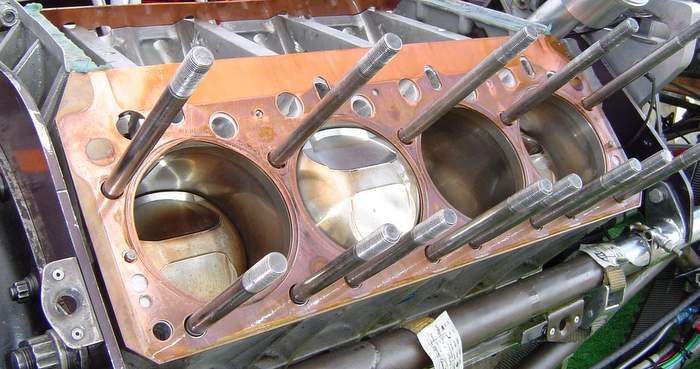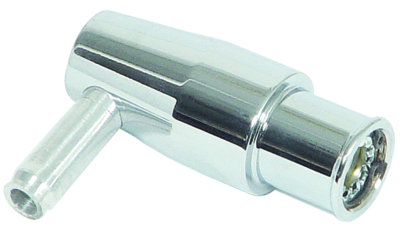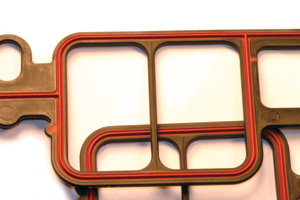Improving the Head Gaskets, Fasteners Relationship
The relationship between head gaskets and head bolts is an intimate one. The clamping load applied by the head bolts is what allows the head gasket to maintain its seal. For this marriage to last, there has to be constant tension – not too much, otherwise the bolts may stretch or break, and not too

Emissions Codes: Mercedes-Benz Case Study
The Malfunction Indicator Light (MIL) has been around for more than 25 years, but since OBD II standards made the electronic monitoring of emissions mandatory, that light has been given new life. In Washington state, the emissions test procedure for OBD II cars makes control of the MIL an integral part of the test procedure.

PCV Valves: The Key To The Positive Crankcase Ventilation System
The major component in the Positive Crankcase Ventilation (PCV) system is the PCV valve, a simple spring-loaded valve with a sliding pintle inside. The pintle is tapered like a bullet so it will increase or decrease airflow depending on its position inside the valve housing. The movement of the pintle up and down changes the

Intake Manifold Gaskets: A Service Rundown
Back in the days when most engines had cast iron blocks, heads and manifolds, the intake manifold could be easily sealed with simple and relatively inexpensive die cut fiber-faced metal gaskets (solid or perforated core). Sealer was usually required to ensure a leak-free installation. But in the late 1980s and early 1990s, fuel systems and

Intake Manifold Gaskets: A Service Rundown
Back in the days when most

Indirect Tire Pressure Monitoring Systems On Import Vehicles
Indirect Tire Pressure Monitoring Systems (TPMS) began making a comeback in 2011 on all Audi models. The highly popular Honda Accord switched to indirect TPMS for the 2013 model year. The 2013 Mazda CX-5 is now also using an indirect TPMS. Some of the VW Golf platform vehicles have switched to an indirect TPMS. Most of these models have the optional ABS and stability control system.
Indirect Tire Pressure Monitoring Systems Making A Comeback On Some Imports
Indirect Tire Pressure Monitoring Systems (TPMS) are the systems that do not have air pressure sensors inside the tires. Rather, they detect a low tire by comparing relative wheel speeds via the Anti-lock Brake System (ABS) wheel speed sensors. New systems are taking advantage of better wheel speed sensors and modules to make indirect systems work. Indirect TPMS began making a comeback in 2011 on all Audi models. The highly popular Honda Accord switched to indirect TPMS for the 2013 model year.
How Vehicle Software Is Changing The Stopping Game
There was a time when advancements in brake technology were entirely hardware based. The change from drum to disc brakes, the introduction of semi-metallic and ceramic pads, and the addition of power brakes as standard equipment were all changes achieved by redesigned and improved brake system components. Today, electronics is driving most of the advancements in braking technology.
Cabin Air Filter: The Unseen Automotive Filter
A new cabin air filter is something many motorists need, but often don’t know it. The cabin air filter (CAF) is not a well-known or well-publicized filter. Close to 90% of late-model cars and trucks now come factory-equipped with a cabin air filter, but the original filters in many of these vehicles have never been changed!
A/C Compressors Take A Pounding
The A/C compressor is a pump that compresses and circulates refrigerant within the A/C system. Some have pistons inside while others have rotating vanes on an eccentric or a pair of metal scrolls or spirals around an eccentric. Many late-model vehicles have “variable displacement” compressors that change the piston stroke to increase or decrease the volume of refrigerant flowing through the system. Some of these run continuously instead of cycling on and off like conventional A/C compressors.
Choosing The Right Camshaft For A Performance Engine
Choosing the “right” camshaft is not only the cornerstone of building a performance engine, but also its centerpiece. Choosing a cam can give anyone a headache – especially if they choose the wrong cam for a given application. There’s a lot of science involved in cam selection, so keep reading and we’ll help you wade through the details.
Maintaining Your Balance: Engine Building Tips To Reduce NVH And Increase Life
Nobody would argue with the fact that engine balancing is right up there with “blueprinting” an engine. The goal is to equalize the reciprocating and rotating forces inside the engine so it will run smoother, last longer and achieve its maximum power potential. Although balancing would seem to be most important for high revving performance engines, it can also provide benefits for relatively stock engines, as well as low revving heavy-duty diesel engines.
